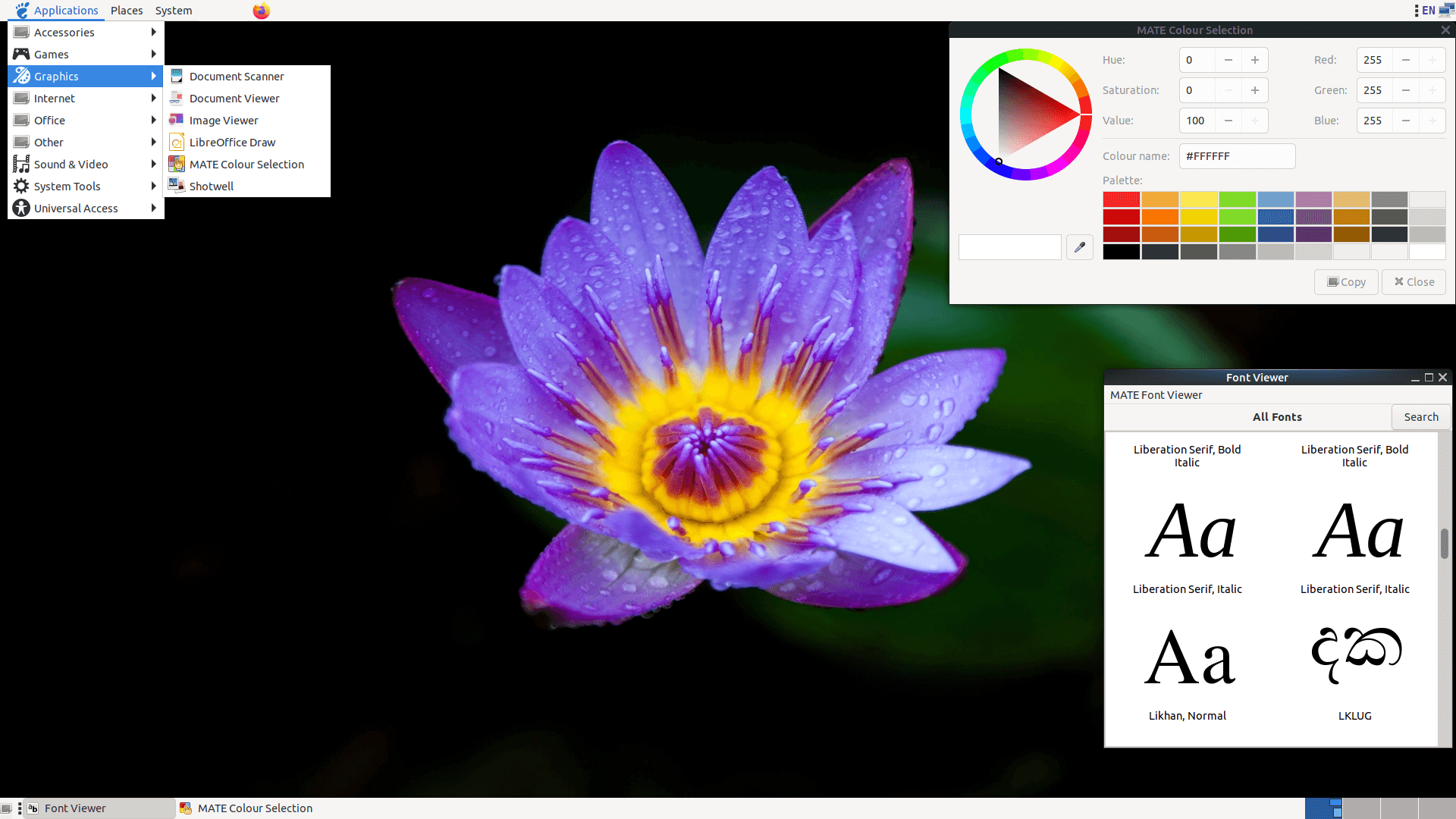Last Updated on May 22, 2022
MATE
The MATE Desktop Environment is the continuation of GNOME 2. It provides an intuitive and attractive desktop environment using traditional metaphors for Linux and other Unix-like operating systems. MATE is under active development to add support for new technologies while preserving a traditional desktop experience.
Before we start, open up a Terminal and make sure your system is up-to-date with the command:
$ sudo apt update && sudo apt upgrade
There’s a couple of ways of installing MATE. We can issue the command:
$ sudo apt install mate-desktop
This installs 4 packages including the desktop environment and its user guide. It’s a small download (approximately 8.2 MB) and uses 87.6 MB of additional disk space.
We recommend you install MATE with this command:
$ sudo apt install mate-core
mate-core is a meta package. It installs 46 new packages including mate-desktop. It’s a 41.6 MB download using 300 MB of additional disk space.
Here’s an image of MATE in action. We’ve added a few things to the desktop.

Pages in this article:
Page 1 – Introduction
Page 2 – KDE Plasma 5
Page 3 – XFCE
Page 4 – MATE
Page 5 – Budgie
All articles in this series:

Well, before coming to this article I only knew about KDE, xfce, Gnome etc. as Linux desktop environments.
But the way you represented it looks completely confusing to me at least from the naming conventions (Kubuntu, Lubuntu, Ubuntu Mate etc.).
But I must thank you for such a well organized content structure. I might have to go through some more article to connect the dots.
Kubuntu, Lubuntu,and Ubuntu MATE are Linux distributions (derivatives of Ubuntu), not desktop environments.
KDE, XFCE, GNOME are desktop environments.
The former can use the latter. For example Ubuntu MATE uses MATE as its default user interface.